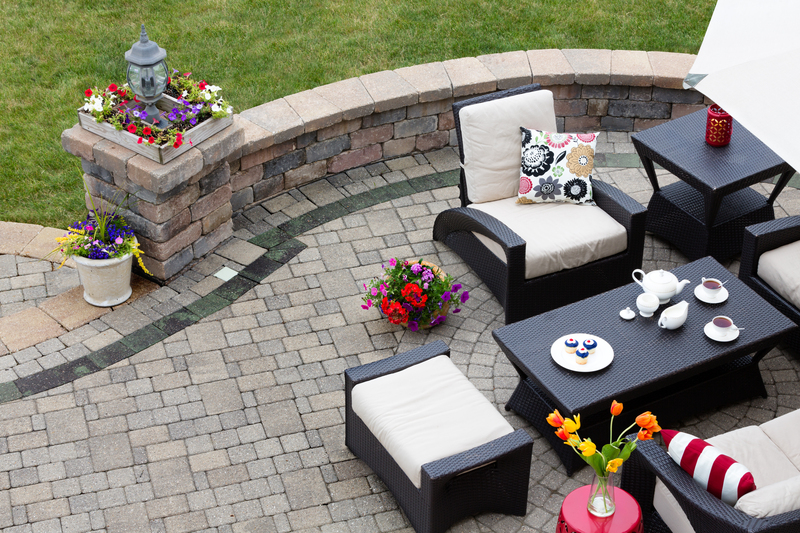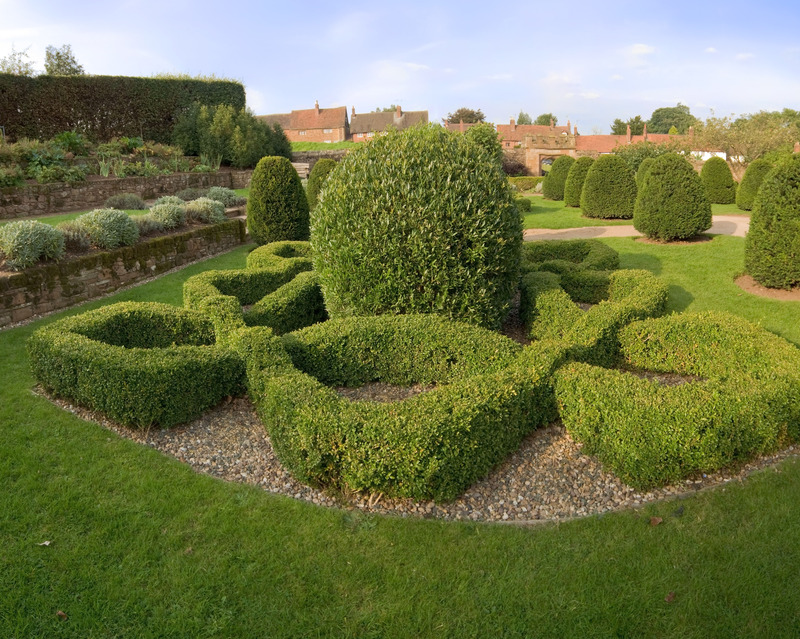Designing a Wind-Resistant Landscape for Your Garden
Posted on 06/06/2025
Designing a Wind-Resistant Landscape for Your Garden
Does your garden struggle against strong gusts and blustery weather? If so, you're not alone. Wind can damage your plants, erode soil, and diminish outdoor enjoyment. But with smart design strategies, you can transform your garden into a lush, resilient retreat. This comprehensive guide explains how to create a wind-resistant landscape that blends form, function, and beauty--no matter how hard the wind blows!
Understanding the Effects of Wind on Your Garden
Before designing your windproof garden, it's vital to grasp how wind impacts plants and the garden environment. Wind-resistant landscaping is not just about sturdier plants; it tackles issues like:
- Physical damage to stems, branches, and leaves
- Soil erosion and loss of nutrients
- Increased evaporation and plant dehydration
- Chilling effects from cold winds, stunting growth
- Reduced pollinator activity on exposed plants
Wind can disrupt your garden's microclimate, making it tougher for sensitive or young plants to thrive. However, with purposeful layout and strategic planting, you can counteract these effects and create a thriving outdoor haven.

Assessing Your Garden for Wind Exposure
Every yard has unique wind patterns. The first step in designing a wind-resistant garden is to evaluate your site:
- Observe prevailing winds: In what direction does the wind usually blow? When is it strongest?
- Monitor seasonality: Are there particular months or seasons that are windier?
- Map out problem areas: Are certain plant beds or seating areas especially exposed?
- Note existing shelter: Trees, fences, and even buildings may already provide partial protection.
Drawing a simple site plan labeling windward and leeward sides will help you implement specific wind-blocking strategies where you need them most.
Core Principles of a Wind-Resistant Landscape
When developing a windproof garden design, remember these key principles:
- Slow, don't block. Solid barriers can create turbulence and wind tunnels. Instead, use layered, porous barriers to reduce wind speed gently.
- Create multiple zones. Establish different levels of protection to shield the most vulnerable garden areas and create varied microclimates.
- Choose resilient plants. Select species that tolerate wind, salt, and sun for exposed areas, saving delicate plants for sheltered spots.
- Use the land's contours. Work with existing hills, berms, and structures as natural windbreaks.
Design Strategies for a Wind-Resistant Landscape
Construct Windbreaks and Shelters
The backbone of a wind-resistant landscape design is the windbreak, which disrupts and slows the wind before it reaches your sensitive plants. Consider these options:
-
Living Windbreaks
- Hedges: Dense shrubs or trees planted in rows work as porous barriers. Examples: Privet, Juniper, Viburnum, Arborvitae.
- Shelterbelts: Multiple rows of mixed species--tall evergreens at the back, medium trees and dense shrubs in front.
- Grasses and Bamboo: Fast-growing ornamental grasses or non-invasive bamboo form flexible, attractive screens.
-
Hardscape Windbreaks
- Lattice Fences: Allow some airflow while still breaking wind impact. Can support climbers and vines for extra protection.
- Screens and Trellises: Freestanding, movable, or fixed in strategic locations--pair with climbing plants for beauty and function.
- Walls and Berms: Use low, curved walls or raised earthen mounds to redirect and dissipate strong gusts.
Tip: The ideal windbreak is 30-50% permeable, which diffuses wind and minimizes turbulence.
Layer Your Plantings for Maximum Protection
Layering plants from tallest to shortest on the windward side--like a natural forest edge--creates an effective barrier and beautiful backdrop. Arrange your wind-tolerant plants in these zones:
- Tall trees and large shrubs as the primary windbreak (windward side).
- Medium/understory shrubs and robust perennials for secondary protection.
- Low-growing groundcovers and grasses to anchor the soil and slow near-ground gusts.
Diversity in species and heights also reduces pest and disease spread, ensures year-round protection, and enhances your garden's aesthetics.
Choosing Plants for a Wind-Resistant Garden
Characteristics of Wind-Tolerant Plants
Certain plant traits make them better suited for windy locations. Fertile options for a wind-resistant landscape typically feature:
- Flexible stems and branches that bend without breaking
- Small, narrow, or leathery leaves to reduce wind drag and moisture loss
- Deep or fibrous root systems to anchor strongly in the soil
- Drought and salt-tolerance (important in coastal gardens especially)
Some great choices include:
- Trees: Hawthorn, Holly, Pine, Spruce, Italian Cypress, Silver Birch
- Shrubs: Pyracantha, Viburnum, Cotoneaster, Escallonia, Elaeagnus, Hebe
- Grasses: Moor Grass, Switchgrass, Feather Reed Grass, Blue Oat Grass
- Groundcovers: Thyme, Juniper, Ice Plant, Hardy Geranium
Planting Wind-Prone Edibles
If growing fruits or vegetables, choose wind-resistant cultivars and varieties. Plant compact, sturdy forms--think bush beans, dwarf fruit trees, or strawberries. Always locate delicate or tall crops (like tomatoes or runner beans) in the lee of shelters or within walled beds for extra protection.
Smart Garden Layout to Minimize Wind Damage
Positioning for Shelter and Protection
- Sheltered microclimates: Locate patios, living areas, vegetable plots, and tropical plants near windbreaks or on the protected side of houses and sheds.
- Avoid wind tunnels: Don't align paths and hedges directly with prevailing winds; stagger their placement to disrupt airflow.
- Vary heights: A tiered layout (tall windbreaks, medium shrubs, low groundcovers) thwarts both high and low-level winds.
- Use strategic grouping: Plant sensitive specimens together or surround them with hardier, wind-tolerant plants for mutual protection.
Soil Considerations and Mulching
Wind not only batters plants but also erodes topsoil and dries it out. Support your windproof garden design by:
- Adding organic matter to boost soil structure and moisture retention.
- Mulching deeply with straw, wood chips, or bark to prevent soil loss and protect roots.
- Using groundcovers and dense planting to anchor loose soils and sharp slopes, slowing erosion.
Practical Wind Protection Techniques
Temporary Wind Shields
- Shade cloth or netting: Use for new plantings or seedlings during the windiest periods.
- Row covers: Lightweight fabric protects edible crops from wind, pests, and temperature swings.
- Stake sensitive plants: Use supports for young trees, sunflowers, or other vulnerable specimens until well established.
Rainwater and Irrigation Management
In windy gardens, rapid evaporation can leave roots dry, even after rainfall. To maintain lush, healthy greenery:
- Install drip irrigation or soaker hoses to deliver water directly to the roots.
- Water early in the morning or late afternoon to minimize evaporation losses.
- Monitor soil moisture carefully during hot or blustery spells.
Creative Landscaping Features for Wind Protection
Innovative Elements for Wind-Resistant Landscapes
Blend functionality and style with these unique garden features:
-
Earth Berms & Raised Beds:
- Shaping the land with low hills, berms, or raised planters blocks near-ground wind and acts as a backdrop for flower borders.
-
Mounded Plant Islands:
- Cluster plants on small mounds, surrounded by gravel or mulch, to reduce direct wind pressure and aid drainage.
-
Sculptural Screens:
- Use attractive metal, wood, or composite screens for privacy and shelter; select styles that complement your garden design.
-
Green Walls & Vertical Gardens:
- Living walls filled with hardy, wind-resistant plants create dramatic and practical wind barriers in smaller spaces.
Combine several elements for a layered approach that improves both the wind-resistance and the visual impact of your landscape!
Maintenance Tips for a Windproof Garden
- Regularly inspect and reinforce windbreaks and shelters for gaps or damage.
- Prune trees and shrubs to maintain healthy, dense growth and prevent windthrow.
- Renew mulch layers and repair groundcover patches after storms or heavy winds.
- Fertilize and water promptly to support recovery of stressed plants.
Always keep your plants healthy and robust--vigorous plants withstand weather extremes far better than weak, undernourished ones.

Bonus: Wind-Resistant Landscaping for Coastal or Urban Gardens
Special Considerations
-
Coastal conditions:
- Salt-laden winds are harsher on plants. Choose salt-tolerant species such as Sea Buckthorn, Tamarisk, or Cordyline.
-
Small urban spaces:
- Courtyards benefit from trellises, moveable screens, and container arrangements for flexible wind blocking and privacy.
Conclusion: Building Beauty and Resilience with a Wind-Resistant Landscape
Designing a wind-resistant landscape for your garden is not only practical--it can transform the harshest site into a verdant, tranquil, and enjoyable space. With the right windbreaks, plant choices, protective features, and layout, your garden will thrive despite blustery conditions. Whether you're starting from scratch, revitalizing established beds, or simply looking to create a haven from the gales, use these strategies to craft a resilient landscape that stands the test of time and weather.
- Assess your site: Know your wind patterns.
- Design smart: Layer windbreaks, plant resilient species, and cluster for shelter.
- Stay flexible: Combine living and hardscape elements for best results.
- Maintain regularly: Keep your garden healthy and reinforced.
Put these wind-resistant landscape tips into action, and enjoy your beautiful, protected garden year-round--no matter how fierce the breeze outside!

